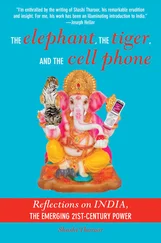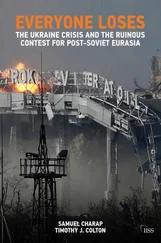Zbigniew Brzezinski - Strategic Vision - America and the Crisis of Global Power
Здесь есть возможность читать онлайн «Zbigniew Brzezinski - Strategic Vision - America and the Crisis of Global Power» весь текст электронной книги совершенно бесплатно (целиком полную версию без сокращений). В некоторых случаях можно слушать аудио, скачать через торрент в формате fb2 и присутствует краткое содержание. Город: New York, Год выпуска: 2012, ISBN: 2012, Издательство: Basic Books, Жанр: Публицистика, на английском языке. Описание произведения, (предисловие) а так же отзывы посетителей доступны на портале библиотеки ЛибКат.
- Название:Strategic Vision: America and the Crisis of Global Power
- Автор:
- Издательство:Basic Books
- Жанр:
- Год:2012
- Город:New York
- ISBN:9780465029556
- Рейтинг книги:4 / 5. Голосов: 1
-
Избранное:Добавить в избранное
- Отзывы:
-
Ваша оценка:
- 80
- 1
- 2
- 3
- 4
- 5
Strategic Vision: America and the Crisis of Global Power: краткое содержание, описание и аннотация
Предлагаем к чтению аннотацию, описание, краткое содержание или предисловие (зависит от того, что написал сам автор книги «Strategic Vision: America and the Crisis of Global Power»). Если вы не нашли необходимую информацию о книге — напишите в комментариях, мы постараемся отыскать её.
Strategic Vision: America and the Crisis of Global Power — читать онлайн бесплатно полную книгу (весь текст) целиком
Ниже представлен текст книги, разбитый по страницам. Система сохранения места последней прочитанной страницы, позволяет с удобством читать онлайн бесплатно книгу «Strategic Vision: America and the Crisis of Global Power», без необходимости каждый раз заново искать на чём Вы остановились. Поставьте закладку, и сможете в любой момент перейти на страницу, на которой закончили чтение.
Интервал:
Закладка:
The ongoing shift eastward in the distribution of global power has also been prompted by the recent emergence on the world scene of postcolonial India, one of the world’s two most populous countries and a state also entertaining global ambitions. Contemporary India is a complicated mixture of democratic self-governance, massive social injustice, economic dynamism, and widespread political corruption. As a result, its political emergence as a force in world affairs has lagged behind China’s. India was prominent in sharing leadership of the so-called nonaligned nations, a collection of neutral but politically wavering states, including Cuba and Yugoslavia, all allegedly opposed to the Cold War. Its brief military collision with China in 1962, which ended in India’s defeat, was only partially redeemed by its military successes in the two wars with Pakistan of 1965 and 1971. By and large, the prevailing view of India until relatively recently has been one of a country with strong moralistic opinions about world affairs but without commensurate influence.
This perception began to change as a consequence of two significant developments: India’s defiant testing of its own nuclear device in 1974 and of nuclear weapons in 1998, and its period of impressive economic growth beginning in the 1990s. India’s liberalizing reforms—including the deregulation of international trade and investment and the support of privatization—are transforming what was an anemic and cumbersome quasi-socialist economy into a more dynamic economy based on services and high technology, thus putting India on an export-driven growth trajectory similar to that of Japan and China. By 2010, India, with a population beginning to exceed China’s, was even viewed by some as a potential rival to China’s emerging political preeminence in Asia, despite India’s persisting internal liabilities (ranging from religious, linguistic, and ethnic diversity to low literacy, acute social disparities, rural unrest, and antiquated infrastructure).
India’s political elite is motivated by an ambitious strategic vision focused on securing greater global influence and a conviction of its regional primacy. And the gradual improvement in US-Indian relations during the first decade of the twenty-first century has further enhanced India’s global stature and gratified its ambitions. However, its simmering conflict with Pakistan, which includes a proxy contest with it for greater influence in Afghanistan, remains a serious diversion from its larger geopolitical aspirations. Therefore, the view—held by its foreign policy elite—that India is not only a rival to China but also already one of the world’s superpowers lacks sober realism.
Nonetheless, the appearance on the world scene of China as the economic challenger to America, of India as a regional power, and of a wealthy Japan as America’s Pacific Ocean ally have not only altered dramatically the global ranking of power but also highlighted its dispersal. That poses some serious risks. The Asian powers are not (and have not been) regionally allied as in the case of the Atlantic alliance during the Cold War. They are rivals, and thus in some respects potentially similar to the European Atlantic powers during their colonial and then continental European contests for geopolitical supremacy, which eventually culminated in the devastation of World War I and World War II. The new Asian rivalry could at some point threaten regional stability, a challenge heightened in its destructive potential by the massive populations of the Asian powers and the possession by several of them of nuclear weapons.
There is, admittedly, a basic difference between the old transoceanic imperial rivalry of the European powers and that of the current Asian powers. The key participants in the Asian rivalry do not compete for overseas empires, which for Europe escalated distant collisions into great power conflicts. Regional flare-ups among them are more likely to occur within the Asia-Pacific region itself. Nonetheless, even a regionally confined collision between any of the Asian states (for example, over islands, or maritime routes, or watershed issues) could send shock-waves throughout the global economy.
The more immediate risk of the ongoing dispersal of power is a potentially unstable global hierarchy. The United States is still preeminent but the legitimacy, effectiveness, and durability of its leadership is increasingly questioned worldwide because of the complexity of its internal and external challenges. Nevertheless, in every significant and tangible dimension of traditional power—military, technological, economic, and financial—America is still peerless. It has by far the largest single national economy, the greatest financial influence, the most advanced technology, a military budget larger than that of all other states combined, and armed forces both capable of rapid deployment abroad and actually deployed around the world. This reality may not endure for very long but it is still the current fact of international life.
The European Union could compete to be the world’s number two power, but this would require a more robust political union, with a common foreign policy and a shared defense capability. But unfortunately for the West, the post–Cold War expansion of the European Economic Community into a larger European “Union” did not produce a real union but a misnomer; in fact, the designations should have been reversed. The earlier smaller “community” of Western Europe was politically more united than the subsequently larger “union” of almost all of Europe, with the latter defining its unity through a partially common currency but without a genuinely decisive central political authority or a common fiscal policy. Economically, the European Union is a leading global player; it has a population and external trade considerably larger than that of the United States. However, through its cultural, ideological, and economic connections to America and more concretely through NATO, Europe remains a junior geopolitical partner to the United States in the semiunified West. The EU could have combined global power with global systemic relevance but, since the final collapse of their empires, the European powers chose to leave the more costly task of maintaining global security to America in order to use their resources to create a life-style of socially assured security (from the cradle throughout early retirement) funded by escalating public debts unrelated to economic growth.
As a consequence, the EU as such is not a major independent power on the global scene, even though Great Britain, France, and Germany enjoy a residual global status. Both Great Britain and France have been entitled since 1945, together with America, Russia, and China, to the right of veto in the UN Security Council and—like them—they also possess nuclear weapons. However, Great Britain remains wary of European unity while France is unsure of its larger global purpose. Germany is the economic engine of Europe and matches China in its exporting prowess but remains reluctant to assume military responsibilities outside of Europe. Therefore, these European states can only truly exercise global influence as part of the larger Union, despite all of the EU’s current collective weaknesses.
In contrast, China’s remarkable economic momentum, its capacity for decisive political decisions motivated by clearheaded and self-centered national interest, its relative freedom from debilitating external commitments, and its steadily increasing military potential coupled with the worldwide expectation that soon it will challenge America’s premier global status justify ranking China just below the United States in the current international hierarchy. Symptomatic of China’s growing self-confidence is its state-controlled media’s frequent allusions to the increasing worldwide perception of China as America’s emerging rival in global preeminence—despite China’s residual and still-unresolved internal difficulties: rural vs. urban inequality and the potential of popular resentment of absolute political authority.
Читать дальшеИнтервал:
Закладка:
Похожие книги на «Strategic Vision: America and the Crisis of Global Power»
Представляем Вашему вниманию похожие книги на «Strategic Vision: America and the Crisis of Global Power» списком для выбора. Мы отобрали схожую по названию и смыслу литературу в надежде предоставить читателям больше вариантов отыскать новые, интересные, ещё непрочитанные произведения.
Обсуждение, отзывы о книге «Strategic Vision: America and the Crisis of Global Power» и просто собственные мнения читателей. Оставьте ваши комментарии, напишите, что Вы думаете о произведении, его смысле или главных героях. Укажите что конкретно понравилось, а что нет, и почему Вы так считаете.











